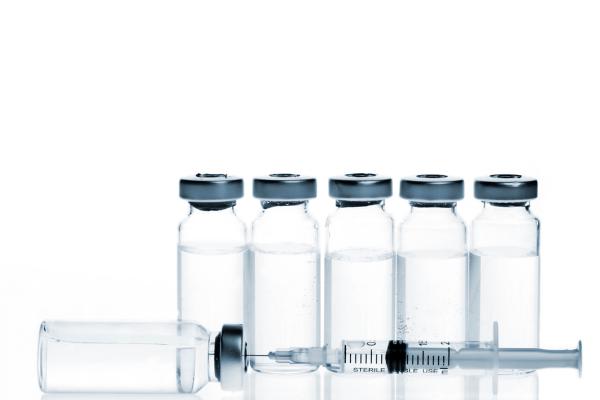
The Potential Benefits of Combining TB500 and GHK-Cu Peptides
Maximizing Healing and Rejuvenation: Exploring the Benefits of TB500 and GHK-Cu Peptides Combined In the rapidly changing field of biomedical research, peptides have become key

Peptide stacking is a sophisticated method that involves the deliberate selection and combination of specific peptides to enhance their individual effects, leading to superior results in areas such as accelerated muscle growth, efficient fat loss, and expedited recovery times. This practice leverages the synergistic potential inherent in peptides like GHRP-6 and Ipamorelin peptide stacking, ensuring their combined use yields greater benefits than when used separately. By aligning peptides that support one another’s actions, researchers can craft a customised strategy that directly addresses distinct health or performance objectives, making peptide stacking a highly personalised approach.
The concept of peptide stacking is not only about combining peptides but doing so in a way that the effects of one peptide enhance or complement the effects of another. For instance, GHRP-6, known for its ghrelin mimetic properties and ability to stimulate hunger and growth hormone release, pairs exceptionally well with Ipamorelin, a peptide favoured for its specificity in stimulating growth hormone release without significantly affecting cortisol levels.
The method of GHRP-6 and Ipamorelin peptide stacking Luxembourg is designed to maximise growth hormone release in a controlled and efficient manner, leading to optimised outcomes in muscle development, fat reduction, and recovery processes. By understanding the unique properties and mechanisms of action of each peptide, users can develop a stacking protocol that is both safe and effective, targeting their specific needs with precision.
GHRP-6 acts as a ghrelin mimetic, stimulating the appetite and promoting the release of growth hormone (GH) from the pituitary gland. Its ability to mimic the hunger hormone ghrelin makes it particularly effective in boosting GH levels, which in turn supports muscle growth and fat loss. On the other hand, Ipamorelin is known for its selectivity as a ghrelin receptor agonist. Unlike GHRP-6, Ipamorelin’s specific action mechanism targets GH release without significantly affecting other hormones, making it an attractive option for those looking to minimise side effects. Both peptides fall under the category of growth hormone secretagogues, which are substances that stimulate the body to produce more growth hormone naturally.
The combination of GHRP-6 and Ipamorelin has been shown to significantly increase bone mineral content, improve body weight management, and enhance muscle growth, according to Luxembourg research studies. This peptide stack is favoured for its comprehensive benefits, including promoting fat loss, facilitating muscle recovery, and improving overall body composition. Additionally, users often report experiencing increased energy levels and improved quality of sleep when GHRP-6 and Ipamorelin peptide stacking together, further highlighting the synergistic benefits of this peptide combination.
GHRP-6 and Ipamorelin peptide stacking, while effective for enhancing growth hormone levels and facilitating muscle growth and fat loss, can lead to several manageable side effects. Commonly reported side effects during studies include mild irritation or discomfort at the injection site, a notable increase in appetite due to GHRP-6’s ghrelin mimetic action, and possible water retention, which might mask fat loss results temporarily.
The intersection of Luxembourg clinical research and practical application has vividly illustrated the multifaceted benefits of GHRP-6 and Ipamorelin peptide stacking, particularly in the realms of bone density enhancement, muscular development, and optimisation of body composition. One pivotal study demonstrated that this peptide stack significantly increased bone mineral content in adult female rats, showcasing a direct correlation between peptide use and improvements in skeletal health. This finding is not only critical for athletes and bodybuilders in terms of injury prevention and recovery but also offers promising implications for combating age-related bone density loss. Furthermore, anecdotal evidence from individuals engaged in rigorous physical training regimes corroborates these findings, with many reporting accelerated muscle growth and enhanced recovery times when integrating GHRP-6 and Ipamorelin peptide stacking.
The synergy in GHRP-6 and Ipamorelin peptide stacking extends beyond their individual capabilities to stimulate growth hormone release, underpinning a comprehensive approach to physical wellness and performance enhancement. Researchers have noted not just improvements in muscle mass and strength, but also in fat loss and skin elasticity, aligning with the broader anti-ageing potential of these peptides.
The Luxembourg scientific community continues to explore the depth of these interactions, with studies highlighting the stack’s ability to significantly impact body composition without the adverse effects associated with traditional anabolic steroids. This research, coupled with real-world testimonials, positions the GHRP-6 and Ipamorelin peptide stacking as a cornerstone in the evolving landscape of peptide therapy, promising enhanced quality of life and peak physical performance for its users.
The horizon of peptide stacking, especially with combinations like GHRP-6 and Ipamorelin, is illuminated by the continuous evolution in scientific research and technological innovation. The exploration into how these peptides synergise has not only validated their efficacy in enhancing muscle growth, fat loss, and recovery but also opened new avenues for anti-ageing and general wellness applications.
As the scientific community gains a deeper understanding of peptide mechanisms and their interactions within the human body, the potential for customised peptide regimens tailored to individual health and performance goals becomes increasingly tangible. These developments promise to elevate the precision of peptide therapies, making them more effective and accessible for a wider audience.
[1] Synthetic Growth Hormone-Releasing Peptides (GHRPs): A Historical Appraisal of the Evidences Supporting Their Cytoprotective Effects. Clin Med Insights Cardiol. 2017 Mar 2;11:1179546817694558 by Berlanga-Acosta J, Abreu-Cruz A, Herrera DGB, Mendoza-Marí Y, et al.
[2] Pharmacokinetic study of Growth Hormone-Releasing Peptide 6 (GHRP-6) in nine male healthy volunteers, European Journal of Pharmaceutical Sciences, Volume 48, Issues 1–2, 23 January 2013, Pages 40-46 by Ania Cabrales, Jeovanis Gil, Eduardo Fernández, Carmen Valenzuel et al.
[3] Ipamorelin, the first selective growth hormone secretagogue, European Journal of Endocrinology 139(5):552-61, December 1998 by Kirsten Raun, B S Hansen, N L Johansen et al.

Maximizing Healing and Rejuvenation: Exploring the Benefits of TB500 and GHK-Cu Peptides Combined In the rapidly changing field of biomedical research, peptides have become key

Introduction to the Importance of Peptide Nasal Sprays Peptide nasal sprays are emerging as a ground breaking solution in pharmaceuticals, offering a less invasive route

Worldwideshipping

Visa/Mastercard/Zelle
Cryptocurrency /Transfers

Safe and Secure Shopping

We Distribute
From

YOU MUST BE OVER 21 YEARS IN ORDER TO USE THIS WEBSITE. All of the products are to be handled only by properly trained and qualified LABORATORY or RESEARCH professionals.